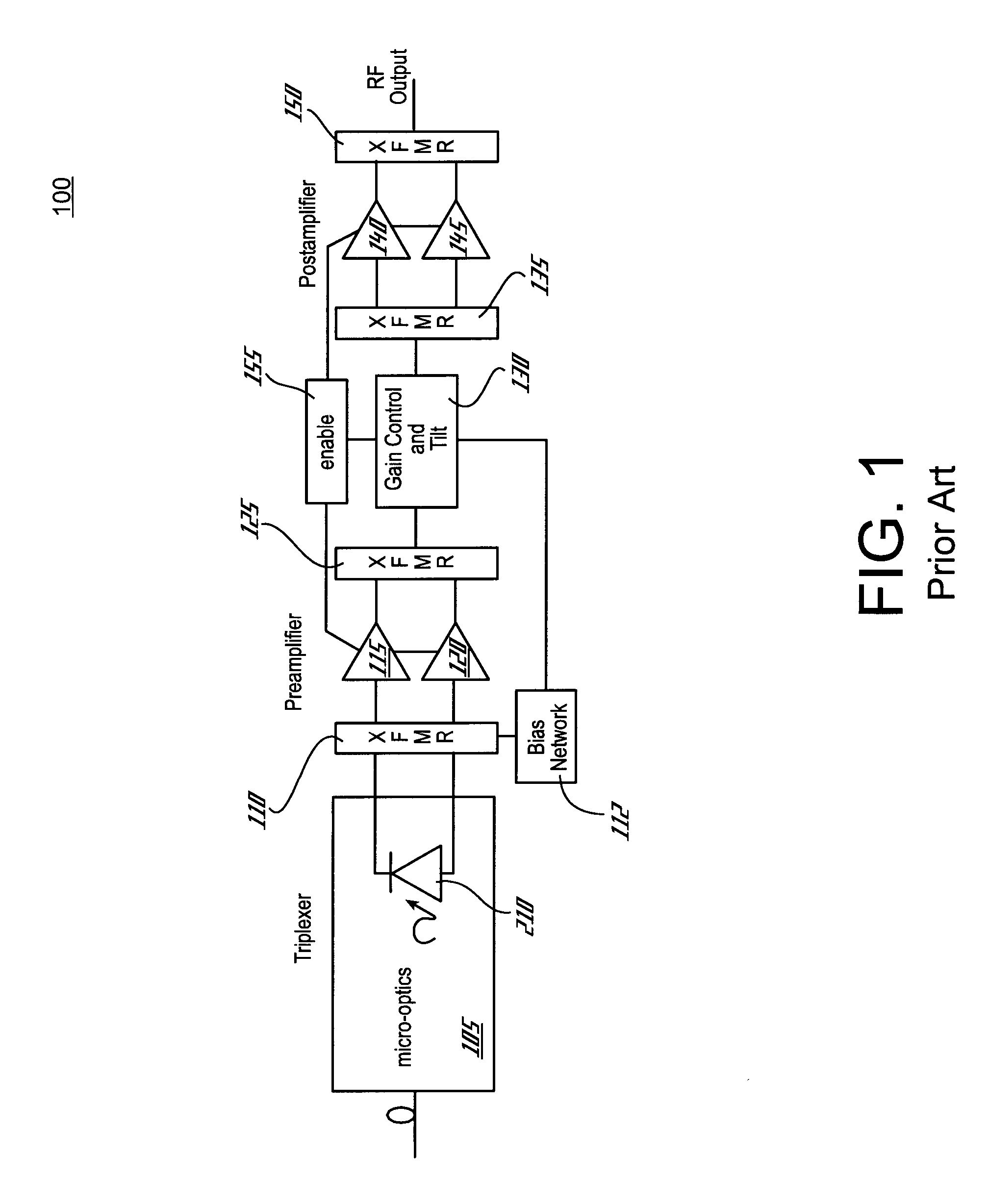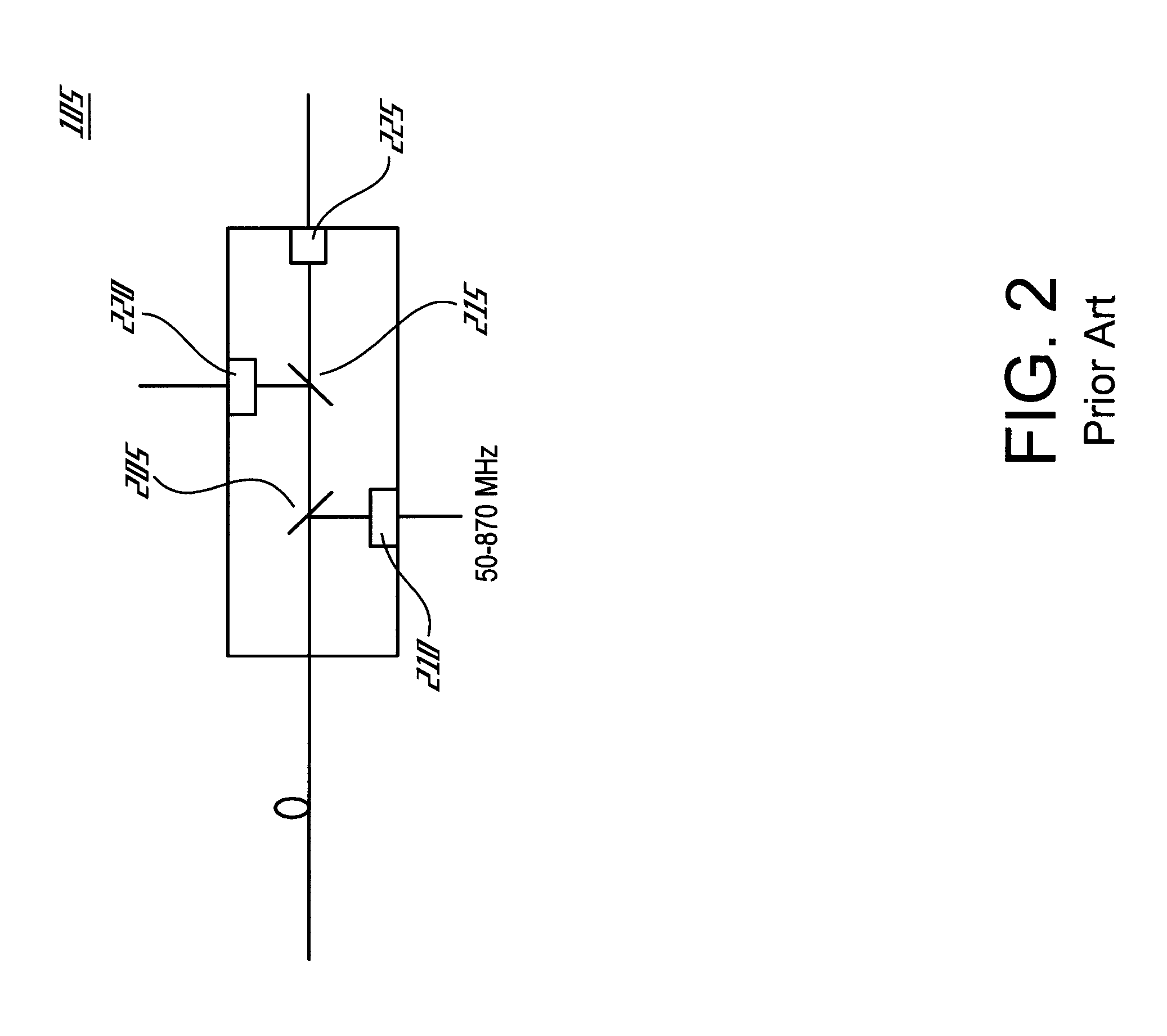Fiber-to-the-home (FTTH) optical receiver with distributed gain control
a technology of optical receiver and distributed gain control, which is applied in the direction of gain control, transmission monitoring, multiplex communication, etc., can solve the problems of maintaining gain control, powering and power consumption, installation, and simplicity requirements of equipmen
- Summary
- Abstract
- Description
- Claims
- Application Information
AI Technical Summary
Benefits of technology
Problems solved by technology
Method used
Image
Examples
first embodiment
[0018]FIG. 3 is an optical receiver in accordance with the present invention that is suitable for use in an FTTH system. The optical receiver 300 in accordance with the present invention utilizes several gain stages as opposed to the conventional optical receiver 100 of FIG. 1. More specifically, in accordance with the present invention, the gain stages 320, 335, 350, 360 are distributed throughout the optical receiver 300 rather than just implementing a preamplifier and a postamplifier stage as shown in FIG. 1. In a conventional optical receiver 100, a higher power gain stage is required to maintain the linearity specifications of the RF output that is required due to the fluctuating input optical level in an FTTH system. Conversely, in accordance with the present invention noise performance is optimized and RF signal levels are prevented from increasing beyond the gain stages linear region, thus allowing for smaller, lower power consumption gain stages. It will be appreciated that...
second embodiment
[0024]FIG. 4 is an optical receiver in accordance with the present invention. An integrated circuit 405 incorporates a preamplifier stage 415 and a first interstage amplifier 430 into one package. It will be appreciated that the integrated circuit 405 can also be coupled to the photodiode 305 either by co-locating the two circuits in one package or using the same substrate for both optics and RF electronics. The optical receiver 400 can then be mounted within an enclosure on an outside wall of a home or business. Included in the integrated circuit 405 may also be a bias network 410 and remote enabling. Gain control circuits 420, 425 are coupled between the preamplifier stage 415 and the interstage amplifier 430.
[0025] The optical receiver 400 also comprises an attenuator 340 and RF detection and automatic gain control circuitry 345. A tilt network 435 is then coupled between the second interstage amplifier 350 and the postamplifier stage 360 to ensure that the RF output is provided ...
PUM
 Login to View More
Login to View More Abstract
Description
Claims
Application Information
 Login to View More
Login to View More - R&D
- Intellectual Property
- Life Sciences
- Materials
- Tech Scout
- Unparalleled Data Quality
- Higher Quality Content
- 60% Fewer Hallucinations
Browse by: Latest US Patents, China's latest patents, Technical Efficacy Thesaurus, Application Domain, Technology Topic, Popular Technical Reports.
© 2025 PatSnap. All rights reserved.Legal|Privacy policy|Modern Slavery Act Transparency Statement|Sitemap|About US| Contact US: help@patsnap.com



